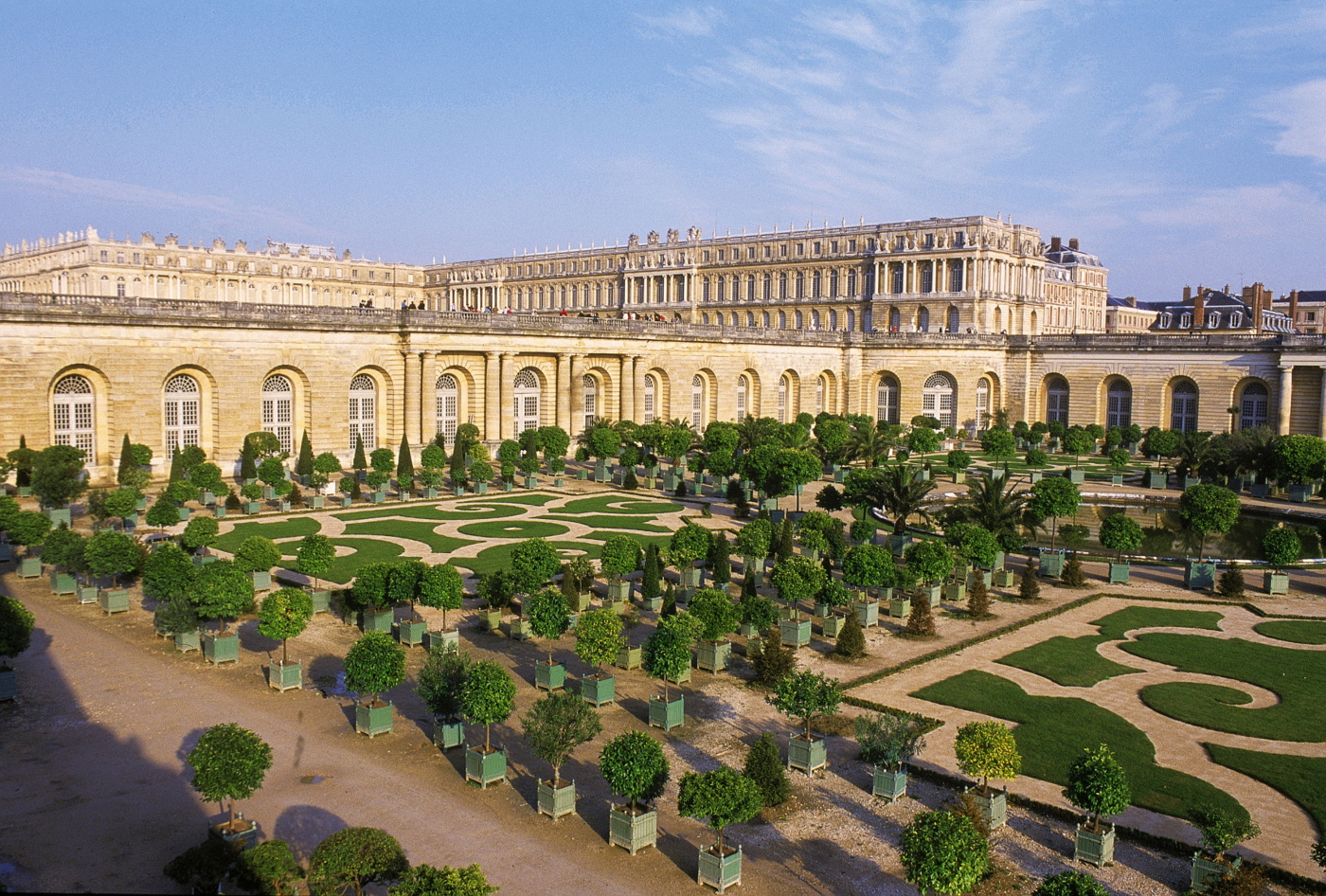

Above: Marie Antoinette, dauphine of France and, later, queen consort (left).
The Palace of Versailles (right).
On this day in history, 16 May 1770, the ceremonial wedding of Dauphin Louis Auguste of France and his fiance, Marie Antoinette (formerly Archduchess Maria Antonia of Austria), took place at the Palace of Versailles just outside of Paris, France. The future queen consort of France had actually only arrived at Versailles that very morning, and must have been swept away by the imposing grandeur of the palace, the most spectacular of its kind in Europe.
In 1765, the series of events leading to the Austrian archduchess' betrothal to the heir to the French throne had begun, when Marie Antoinette's father, the Austrian Emperor, had died of a stroke that year. Because of the deaths of several of her siblings from a smallpox epidemic, Marie Antoinette was the only available daughter for the fourteen-year old French dauphin Louis Auguste. Negotiations for a betrothal began, but as historians such as Caroline Weber point out, the rigorous standards of the French court meant that the prospective bride had to be considerably beautified and perfected to fit in with their exacting standards. Her crooked smile was cosmetically altered so that it would be "very beautiful and straight". The bride's dowry was set at 200,000 crowns and, as Weber states, Empress Maria Theresa, mother of Marie Antoinette, spent 400,000 livres on her youngest daughter's trosseau, far more than she had lavished on her other children.
Above: the future Louis XVI of France, husband of Marie Antoinette.
On 19 April 1770, aged fourteen, Marie Antoinette was married by proxy in the Church of the Augustine Friars in Vienna, Austria, where she had been baptised following her birth. On 7 May, nine days before her official marriage, the new French dauphine was handed over to her French relations on a French island near Kehl, the ceremonial halfway point between the Austrian empire and France. Marie Antoinette was acquainted with her new husband's family, including his amorous grandfather Louis XV of France, the king's daughters Mesdames Adelaide, Victoire, and Sophie, and her future brothers-in-law. On 16 May, she arrived at Versailles, and was married that same day.
The dauphine was dressed in a lavish gown of white cloth-of-silver, which as Weber remarks was the traditionally prescribed material for the wedding gown of a dauphine. It was enhanced by gorgeous diamonds which Marie Antoinette had received from her formidable mother, Empress Maria Theresa, as wedding gifts. However, the wedding gown was far too small in its bodice, which meant that there was, according to one observer, "quite a broad stripe of lacing and shift quite visible". Black thunderclouds filled the summer sky and were perceived to be an ominous omen, according to the Duc de Richelieu. Despite the problems with her wedding dress, Marie Antoinette "cut a breathtaking figure as she made her way to the King's Chapel" (Weber). As Mademoiselle Cosson de la Cressonniere wrote:
Bearing the wishes of her court,
She comes, by noble marriage led;
'Tis Psyche in the bloom of youth
Conducted here to Cupid's bed.
Although the dauphine appeared graceful and elegant, her teenage husband was seen to tremble excessively during the wedding service and blushed when he passed his new wife the wedding ring. At the wedding meal, he ate with gusto, in contrast to Marie Antoinette who ate barely anything, instead appearing as "a statue of Beauty". Clearly, the rigorous lessons she had undertaken in her youth in grace, charm and sophistication had paid dividends in what was, thus far, the most important ceremony and occasion of her life. Following the wedding service and public dinner, the royal couple were publicly put to bed "before the whole world". However, the newlyweds did not consummate their wedding that night. Royal ambassadors learned of this embarrassing detail the following morning and hastily informed their royal masters of this scandalous fact. Marie Antoinette was later to admit that her new husband had not even touched her hand. As Marie Antoinette's biographer Antonia Fraser states, the lack of consummation was to plague the reputation of both Louis and Marie Antoinette for seven years to come.
Thus it was that this tragic teenage couple were married at Versailles in 1770. Surely no one could then have foreseen that, only twenty-three years later, both these figures would be dead, brutally guillotined in the wake of a bloodthirsty Revolution that swept France and enacted devastating and unprecedented change.
No comments:
Post a Comment